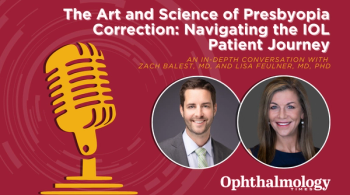
Microwave treatment may be in the future of corneal refractive surgery
San Francisco-Treatment of the cornea using a novel microwave device is being investigated as a new approach for performing corneal refractive surgery without damaging the epithelium, removing tissue, or compromising structural integrity, said John Marshall, PhD.
San Francisco-Treatment of the cornea using a novel microwave device is being investigated as a new approach for performing corneal refractive surgery without damaging the epithelium, removing tissue, or compromising structural integrity, said John Marshall, PhD.
Based on the findings from biomechanical modeling studies, Dr. Marshall and colleagues at King’s College, London, hypothesized that by targeting a small circle of stromal collagen fibrils superficially and centrally, it would be possible to flatten the corneal curvature, whereas deeper treatment to modify the collagen structure in a more peripheral ring could induce steepening to correct hyperopia.
The investigational microwave system induces these changes by creating a heating effect that results in collagen shrinkage and subsequently alteration of corneal curvature. The microwaves flow between two annular electrodes. Control of the depth of the heating within the stroma is achieved by adjusting the microwave field intensity and cooling period.
In vitro studies have been performed in animal and human donor eyes. Histopathologic examination demonstrates alterations in the collagen fibrils and in the local geometry of the lamellae. The first clinical treatment was performed by Omer Faruk Yilmaz, MD, in Istanbul, Turkey, March 24.
Reminding the audience that he is “an excimer laser person”-Dr. Marshall holds the patent that led to the establishment of the first FDA approved excimer laser for refractive surgery-he also noted that as a good scientist, he is committed to expose established systems to ongoing investigation.
Referencing a quote from Winston Churchill who described a fanatic as someone who can’t change his mind and won’t change the subject, Dr. Marshall concluded by stating, “I’m always changing my mind, and I hope I am changing the subject from lasers to microwaves.”
Newsletter
Don’t miss out—get Ophthalmology Times updates on the latest clinical advancements and expert interviews, straight to your inbox.
















































.png)


